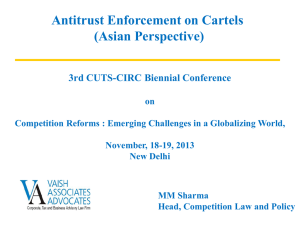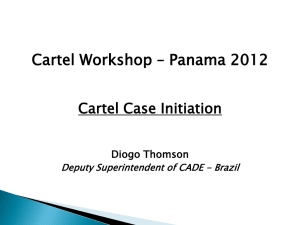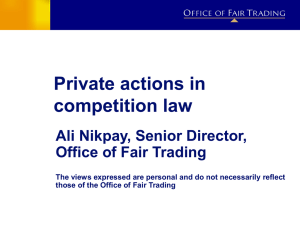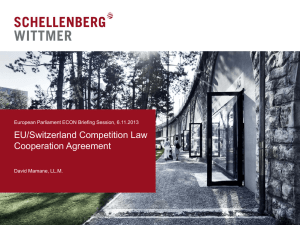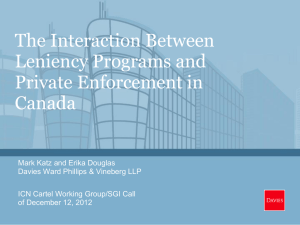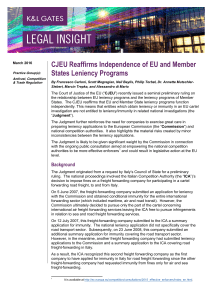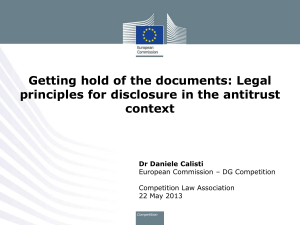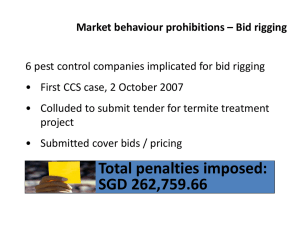How to Design an Effective Leniency Program, Christopher Ries
advertisement
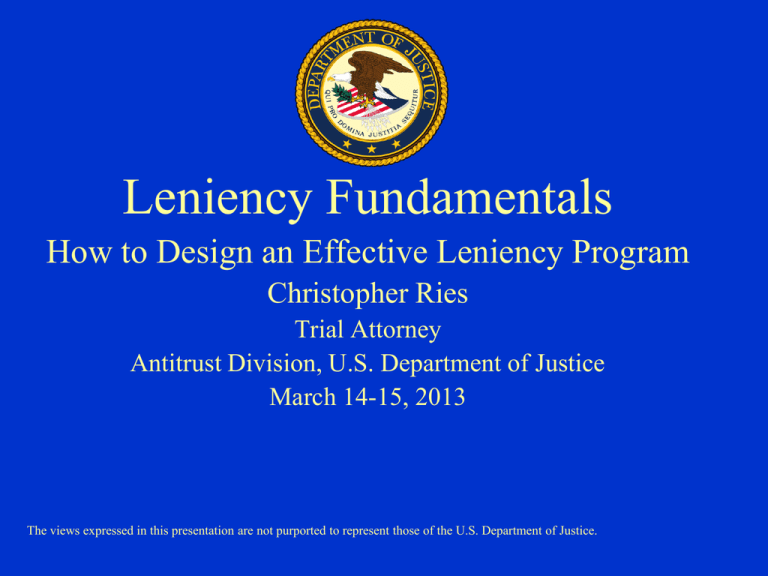
Leniency Fundamentals How to Design an Effective Leniency Program Christopher Ries Trial Attorney Antitrust Division, U.S. Department of Justice March 14-15, 2013 The views expressed in this presentation are not purported to represent those of the U.S. Department of Justice. Leniency: Most Important Tool for Uncovering Price-Fixing Cartels • Gives full immunity to first qualifying cartel member to confess and cooperate – no penalties or punishment of corporation or its executives • Powerful tool for detecting cartels – Creates race to report – Creates distrust in cartels – Creates incentives to defect from cartels • Most large U.S. cartel cases involve leniency applications 2 Cornerstones of an Effective Leniency Program • Threat of Severe Sanctions • Heightened Fear of Detection • Transparent Application of Program 3 Threat of Severe Sanctions • U.S. – – – Prison Terms for Executives Criminal Fines Treble Damages in Private Civil Actions • Others - No Prison - Heavier Fines • Risks Must outweigh Rewards of Crime – US Model – Fear of Individual Culpability 4 Threat of Severe Sanctions • Full immunity only available to the first company to self report and meet the conditions of the program • The second company – even if second by only a matter or minutes or hours – and those that follow, as well as their executives, face severe sanctions 5 Fear of Detection • • No Fear of Detection = No Incentive to Report Tools to Increase Risk of Detection – Corporate and Individual Leniency Policies – Cartel profiling • Proactive effort to investigate suspicious activity in adjacent markets or in markets involving one or more players from other cartels • “Omnibus” question- Are you aware of cartel activity in any other market/industry? – Amnesty Plus – Penalty Plus Policy 6 Transparency • Explicitly Stated Standards and Policies – – Models and Papers Speeches • Consistency vs. Prosecutorial Discretion • 20-fold increase in U.S. applications after we revised our program to make it more transparent and predictable 7 U.S. Leniency Program: Leniency Steps 1. Applicant seeks leniency by approaching Division 2. Division confirms leniency is available 3. “Marker” given to secure place at front of line 4. Applicant “perfects” marker. Conditional leniency is granted and conditional leniency letter provided to applicant. 5. Investigation and prosecution of co-conspirators continues 6. Final leniency granted 8 U.S. Leniency Program: Confidentiality Policy • Division will treat as confidential the identity of leniency applicants and any information obtained from the applicant. • Division will not disclose a leniency applicant’s identity, absent prior disclosure by or agreement with the applicant, unless authorized by court order. • Division will not disclose to foreign authorities information obtained from a leniency application unless the leniency applicant agrees to the disclosure. – Division routinely obtains waivers to share information with another jurisdiction in cases where the applicant has sought and obtained leniency from that jurisdiction. 9
